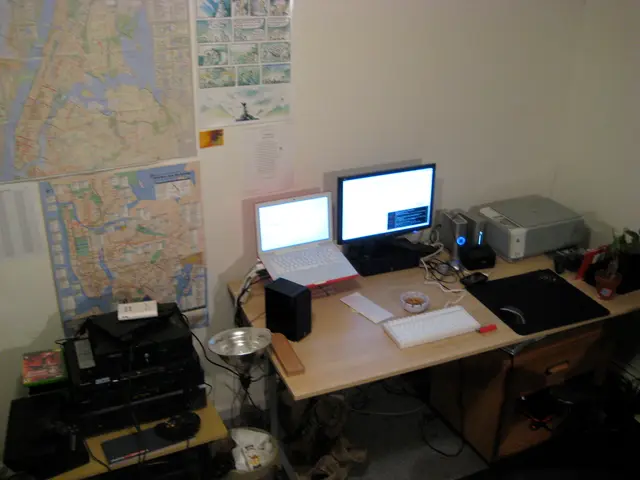Uncovering Time Fraud: Dealing with Employees Manipulating Work Hours Tracking Systems
### Modern Technology Solutions to Combat Time Theft in the Workplace
Time theft, such as the practice known as "buddy punching" where one employee falsely marks another as present during office hours, is a growing concern for businesses aiming to maintain accurate payroll and accountability. Fortunately, modern technology offers robust solutions to combat these practices effectively.
In this article, we will explore four key technological strategies that can help prevent time theft: biometric time clocks, GPS and geofencing solutions, mobile apps with PINs and photo verification, and real-time location tracking and reporting.
#### Biometric Time Clocks
Biometric systems, which use fingerprint, facial recognition, or iris scanning, ensure that only the authorized employee can clock in or out. This eliminates buddy punching entirely. While these systems provide high accuracy in employee verification and are particularly effective for on-site employees, they come with higher upfront costs, potential privacy concerns, and may not be suitable for remote workers.
#### GPS and Geofencing Solutions
GPS tracking and geofencing require employees to be physically present at a designated work site to log their hours, making it impossible to clock in from unauthorized locations. This approach is ideal for field-based or remote teams. Geofences can be set up around job sites, and employees are only allowed to clock in or out when within these virtual boundaries. Some systems even automatically clock employees out when they leave the geofenced area. However, potential drawbacks include potential battery or GPS signal issues on mobile devices and the possibility that employees might disable location permissions.
#### Mobile Apps with PINs and Photo Verification
Time tracking apps can transform any device into a clock-in station, requiring employees to enter a unique PIN and, optionally, take a photo (selfie) at clock-in/out to verify identity. This adds an extra layer of security beyond simple geolocation and is effective for distributed teams or temporary job sites.
#### Real-Time Location Tracking and Reporting
Advanced solutions provide real-time location data and movement history during shifts, allowing managers to verify that employees are where they should be throughout their workday. Automatic alerts for overtime, late arrivals, or missed shifts further enhance accountability.
When implementing these technologies, it's crucial to consider compliance with local labor laws, privacy concerns, integration with existing software, and user experience to encourage adoption and minimize resistance.
In summary, a combination of biometric verification, geofencing, and multi-factor authentication (e.g., PIN plus photo) provides the strongest defense against time theft in modern workplaces. The optimal solution depends on your workforce’s structure, budget, and privacy considerations. Implementing these technologies not only deters time theft but also promotes a culture of accountability and transparency.
It's important to remember that ignoring minor infractions can lead to more significant problems down the road, and showing trust in your staff helps prevent cheating and fosters a healthier and more productive workplace. Time theft can lead to lost revenue and decreased morale among employees.
Predicting screenshots is a technique employed by some employees to avoid being caught by tracking software, and some employees may use programs to block or hide the screenshot function. Firing an employee for time theft can be difficult and may not be the best course of action. Common ways employees cheat time-tracking systems include buddy punching, automating mouse movements, hiding idle time, and using a second monitor.
Clear time theft policies should be clearly written and communicated to all employees. Time theft is a significant problem in today's remote and hybrid workplaces, costing businesses billions of dollars annually. Properly implemented, time tracking can be beneficial for employers and employees. Using a tool that tracks employee activity and flags suspicious behavior can help managers catch time cheaters before they cost the company money. Investing in more advanced time-tracking software to detect abnormal patterns and alert managers can help prevent AI-powered cheating. Some employees use AI-powered software to mimic their behavior and cheat time tracking tools.
In conclusion, implementing digital time-tracking tools that require biometric data or GPS tracking can help prevent time theft. Regularly monitoring employee activity and looking for suspicious patterns can help managers catch time cheaters. It's important to be consistent in how you handle time-tracking violations and consider implementing random spot checks with employees' supervisors to maintain a culture of accountability and transparency in the workplace.
- To combat time theft through screenshots, employers can invest in more advanced time-tracking software that detects abnormal patterns and alerts managers.
- In addition to technology solutions like biometric time clocks and GPS tracking, promoting workplace-wellness and health-and-self development can help reduce time theft by fostering a culture of trust and accountability.
- Education and training on the importance of honesty and integrity in the workplace, and the negative impact of time theft on business finance, can be an effective strategy in preventing time theft.
- When implementing digital time-tracking tools, it's crucial to ensure compliance with privacy laws and to educate employees on the proper use of the technology to prevent unintended mistakes.
- Businesses can also consider pairing time-tracking technology with project management software to analyze work patterns and identify potential areas of inefficiency or time waste in their work processes, ultimately leading to increased productivity and profitability.




